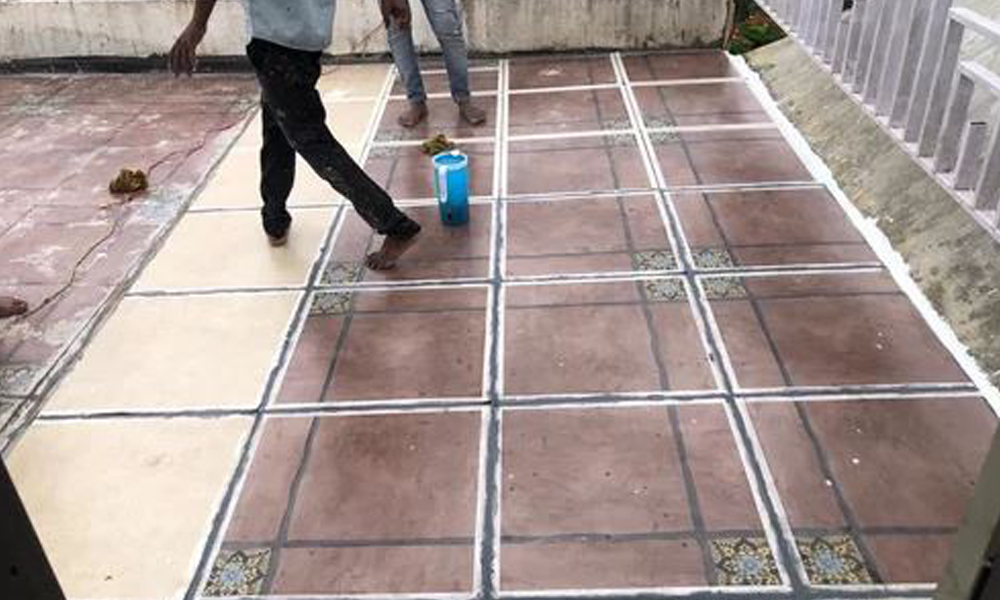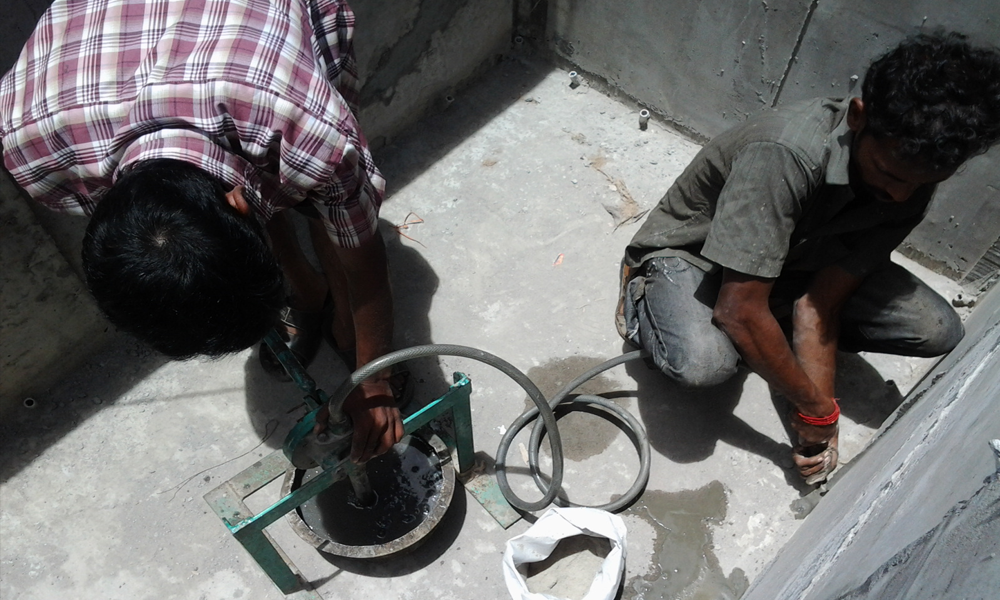
GROUTING WORK
Grouting work involves the application of a fluid mixture, typically composed of cement, water, and additives, into the voids or spaces within a structure to improve its stability, strength, or sealing properties. Grouting is commonly used in construction, civil engineering, and geotechnical applications for various purposes, including foundation stabilization, Waterproofing, soil improvement, and repairing concrete structures.
There are several types of grouting techniques used depending on the specific requirements of the project:
1) Pressure Grouting: This method involves injecting grout under pressure into cracks, joints, or voids within concrete structures to fill them and improve their strength and Waterproofing. Pressure grouting is often used to repair cracks in concrete walls, floors, and foundations, as well as to stabilize soil and rock formations in tunneling or mining operations.
2) Compaction Grouting: Compaction grouting is used to improve the stability and load-bearing capacity of soil by injecting low-slump grout into the ground at high pressure. As the grout expands and compacts the surrounding soil, it densifies and reinforces the ground, providing support for foundations, embankments, or underground structures.
3) Permeation Grouting: Permeation grouting involves injecting low-viscosity grout into porous or permeable soil or rock formations to reduce their permeability and improve their strength and stability. This technique is commonly used for Waterproofing and sealing underground structures, such as tunnels, dams, and retaining walls, as well as for stabilizing loose or sandy soils.
4) Chemical Grouting: Chemical grouting utilizes specialized chemical grouts that react with the surrounding soil or water to form a solid, impermeable barrier. This method is often used for repairing leaks in underground structures, sealing cracks in concrete, or stabilizing soil and rock formations where traditional cementitious grouts may not be suitable.

